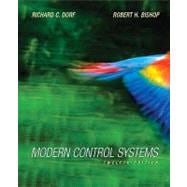Modern Control Systems, 12e, is ideal for an introductory undergraduate course in control systems for engineering students. Written to be equally useful for all engineering disciplines, this text is organized around the concept of control systems theory as it has been developed in the frequency and time domains.
It provides coverage of classical control, employing root locus design, frequency and response design using Bode and Nyquist plots. It also covers modern control methods based on state variable models including pole placement design techniques with full-state feedback controllers and full-state observers.
Many examples throughout give students ample opportunity to apply the theory to the design and analysis of control systems. Incorporates computer-aided design and analysis using MATLAB and Lab VIEW Math Script.








